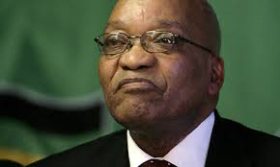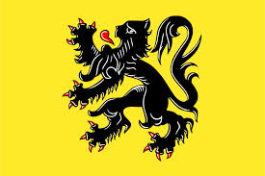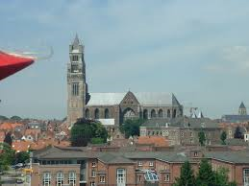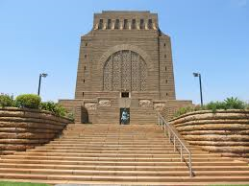
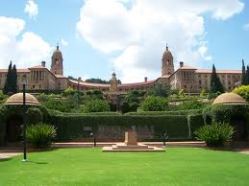
Pretoria is a city in the Gauteng province in the Northeast of South Africa. It is one of the three capitals of South Africa being the executive and administrative capital of the country, the other two are Cape Town (Kaapstad), legislative, and Bloemfontein, judicial. The Ndebele tribes occupied the area when nowadays is Pretoria in 1600. The city of Pretoria was build in 1855 by Marthinus Pretorius, leader of the Voortrekkers, who named it after his father Andries Pretorius that was perhaps the most important Voortrekker leader, leading the Boers to the victory in the Battle of Blood River against the troops of the Zulu king Dingane. Pretoria became the capital of the South African Republic (ZAR) in 1860. The moment marked the end of the Great Trek settlements and the founding of the Transvaal republic alongside with the Oranje Vry Staat to the south. The peace treaty that ended the First Boer War was signed in Pretoria, in 1881. The city was occupied by the British, in the Second Boer War the Peace of Vereeniging was signed in Pretoria and marked the end of the ZAR. In 1910 the Cape Colony, Natal, Vry Staat and Transvaal were united foundating the Union of South Africa which Pretoria being his administrative capital. During the Apartheid period the city remained as the administrative capital. After Apartheid the city remained as the administrative capital and but in 2000 the name of the Metropolitan Municipality and changed to Tshwane. In 2005 the ANC try to change the name of the city to Tshwane but due to strong opposition of Afrikaner civil groups it was not done.
The city is located in a plateau at 1350 meters of altitude. The climate is warm and humid in the summer, and the summer last 6 months. The winter in cold and dry but last for just 2 months with a large amplitude of temperature from the maximum to the minimum. The record temperatures are 42ºc of maximum in January and -6ºc of minimum in June.
In terms of population, Pretoria has 687.540 habitants but in the surrounding area live more than 2 million people. Since the begin of the city Pretoria has been a Boer-Afrikaner majority city and in 2011, 52,5% was white, 42% black, 2,5% coloured and 1,9% Indian. Because of the Boer-Afrikaners makes more than 40% of the population, Afrikaans is the most spoken language in the city spoken as the 1º first language by 47,7% of the people followed by English 16,4% and Northern Sotho with 8%. In the Pretoria area live around 1 million Boer-Afrikaners, and Pretoria is the city of South Africa is which more Boer-Afrikaners live, which show wel the importance of this city and area to the Boer-Afrikaner people.
In terms of monuments Pretoria is one of the most beautiful cities of South Africa with influences of both Dutch and British arquitecture. It was a lot of imposing buildings as the Union Buildings, the Palace of Justice, the Old Council Chambers, the Transvaal Museum, several churches and statues of Andries Pretorius and Paul Kruger. It also in Pretoria where it is located the Voortrekker monument a very important symbol of the Boer-Afrikaner people because remembers the Voortrekker history. Besides the history of the Boer-Afrikaner people those monuments have a great importance to the history of the South Africa as a country.
Pretoria is also a city of the sport known by the love of rugby and the Blue Bulls team of the best of South Africa. Cricket is also a popular sport in the town.
Pretoria is a very important city for the Boer-Afrikaner people, rich in Boer-Afrikaner culture and it is the centre of the largest Boer-Afrikaner community is the country. It is a city the Boers found and that we need to preserve from all the attacks that have been made to his history and thus to the history of the Boer-Afrikaner people.




